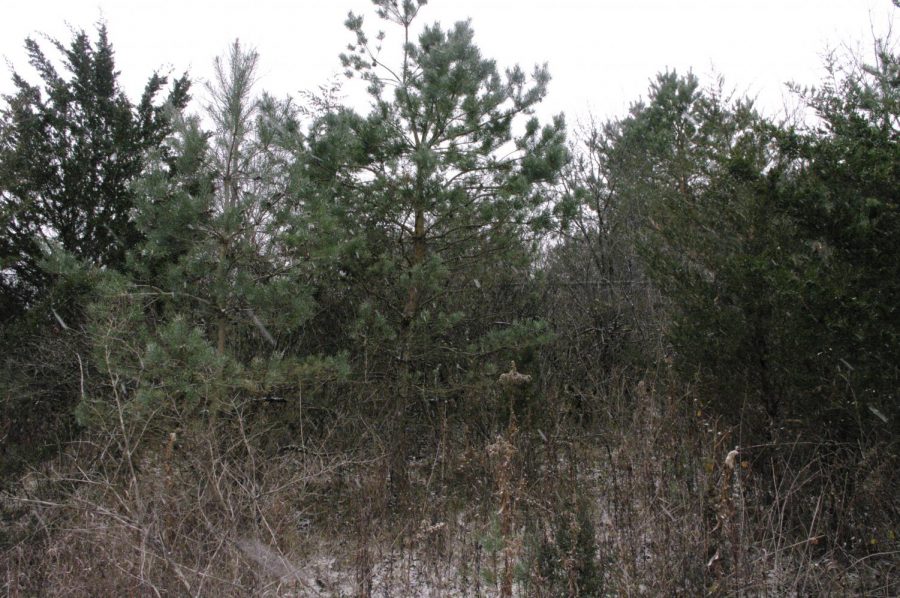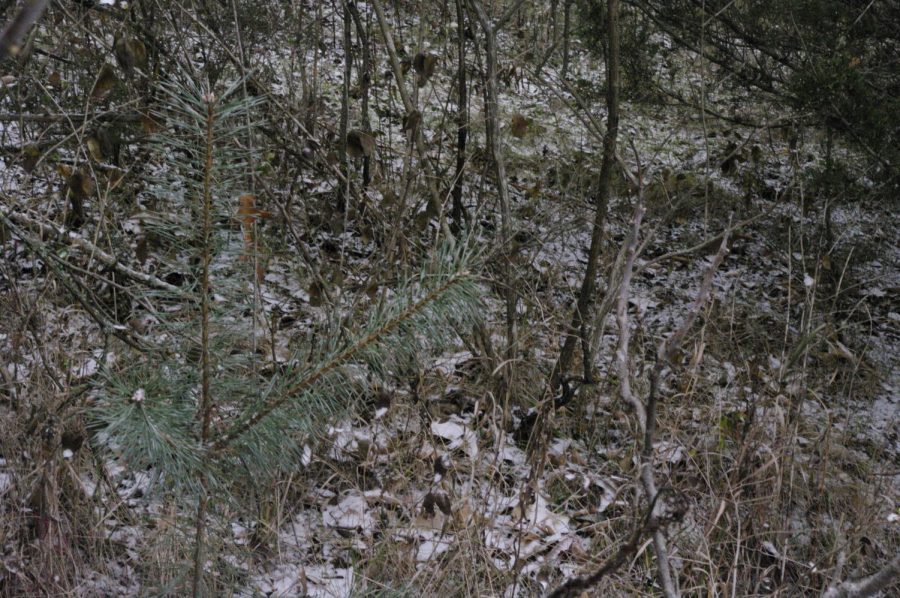Winter foraging in Whitewater
Sap from pine trees is safely consumable as it is a high source of vitamin C & A. 12/7/21
December 12, 2021
Foraging is a natural human instinct passed down from our ancestors when they were mainly in hunting and gathering groups. While for many of us, foraging is no longer a necessity but an enjoyable afternoon activity that just about anyone can partake in. There are a variety of goodies to forage for in every season! Summer has an abundance of wild blueberries along with dandelion greens for tea! Visit any wetland in the Spring, such as those in Kettle Moraine forest here in Whitewater, and grab yourself a handful of invasive cattails to be used as decoration or grounded into a flour. In Fall, puffball mushrooms are a goldmine of deliciousness to be discovered. The bulbous white balls are easily discovered in grassy open meadows and fields but can also easily be found in the undergrowth of deciduous, (leaves falling), forests. Winter is one of the best times to forage for Chrisitmas decorations along with some delectable treats hidden amongst the forest floor.
Some of the most popular quick grabs are pine cones and birch branches! These gorgeous displays made by mother nature herself are an easy forage choice for beginners. It may seem daunting at first attempting to discover what plants are protected by the state and especially what is safe for consumption. Caroline French, the Gardening clubs president has a bit of advice on how to do so.
“There are so many plant lovers on our campus, even ones that don’t come to the garden club and if people want to get out and get closer with nature, the prairie on the back side of campus is a great option. Foraging is an interesting experience but it’s important to be 100% sure of what something is before eating it. There are some great foraging books on mushrooms and berries that are good to eat! If you are looking to gain experience in this area, come volunteer in the campus garden during the summer months or even in the greenhouse during the winter and get familiar with different types of greenery.” Said, French.
Some of the best types of foods to forage are nuts! Although it may take a little work to make some of these guys edible, it is in the end worth it to devour food picked with your own hands. Some of the best nuts to forage in Winter are, chestnuts, hazelnuts, walnuts, pine nuts, butternuts and finally acorns, which can be eaten raw! There are also a few fruits and berries that hold out until the middle of winter or even until the end. These can be crab apples, hawthorn berries and Rosehips. There are a variety of recipes online to turn these foraged ingredients into jams, jellies, wines and even ketchup.
If you are already familiar with forests or are an avid hiker don’t forget to grab a reusable bag to fill with foraged goods while on a walk. If one is too nervous about their ability to scope out edible food, then start off small with evergreen branches, mistletoe or juniper to also use as decoration. This activity is full of fun and a great time for both families as well as those who hike solo.
For more information about the UW-W Gardening club visit https://www.facebook.com/UWWGardeningclub/















